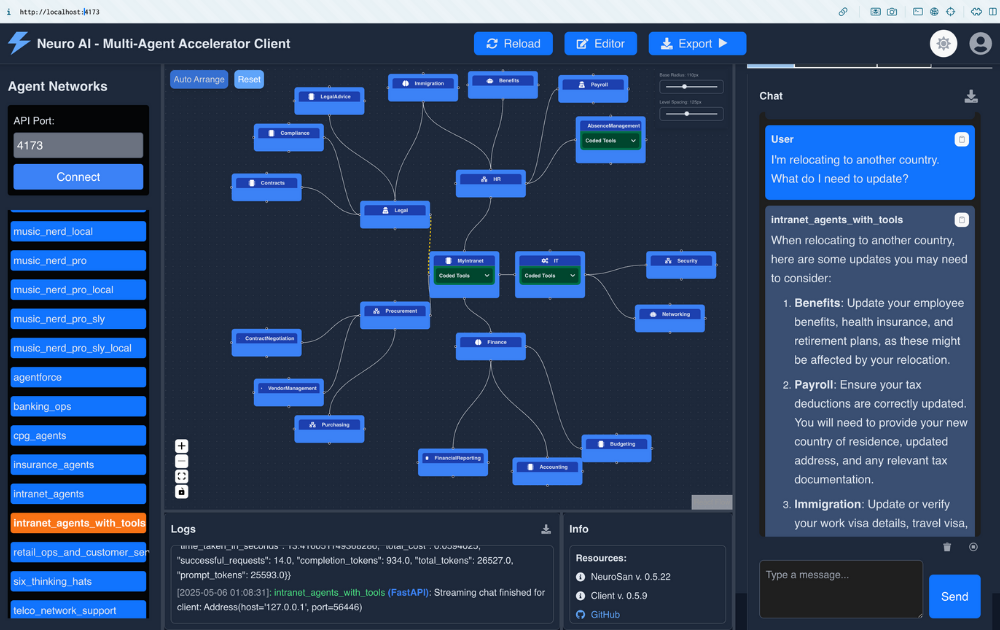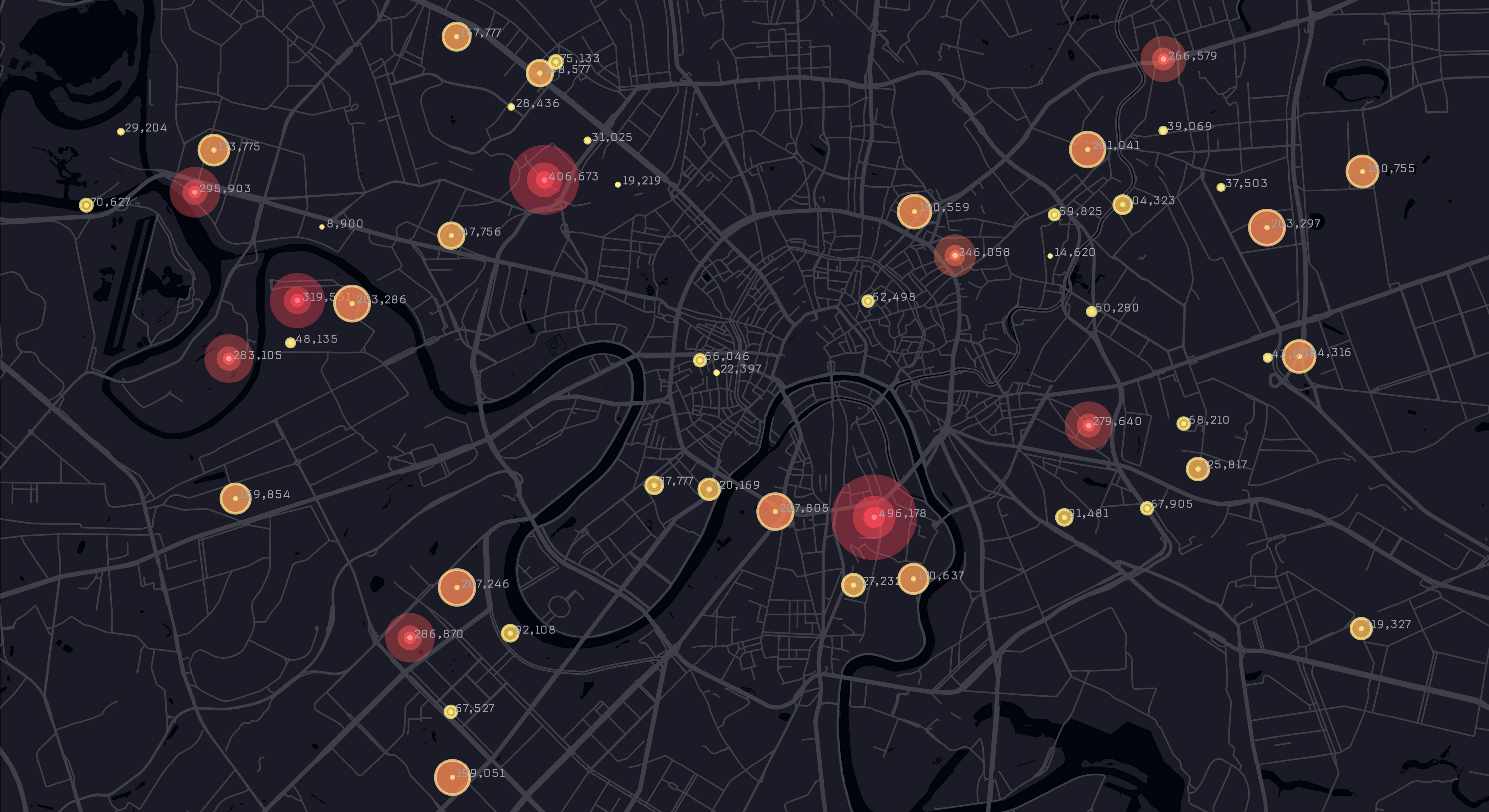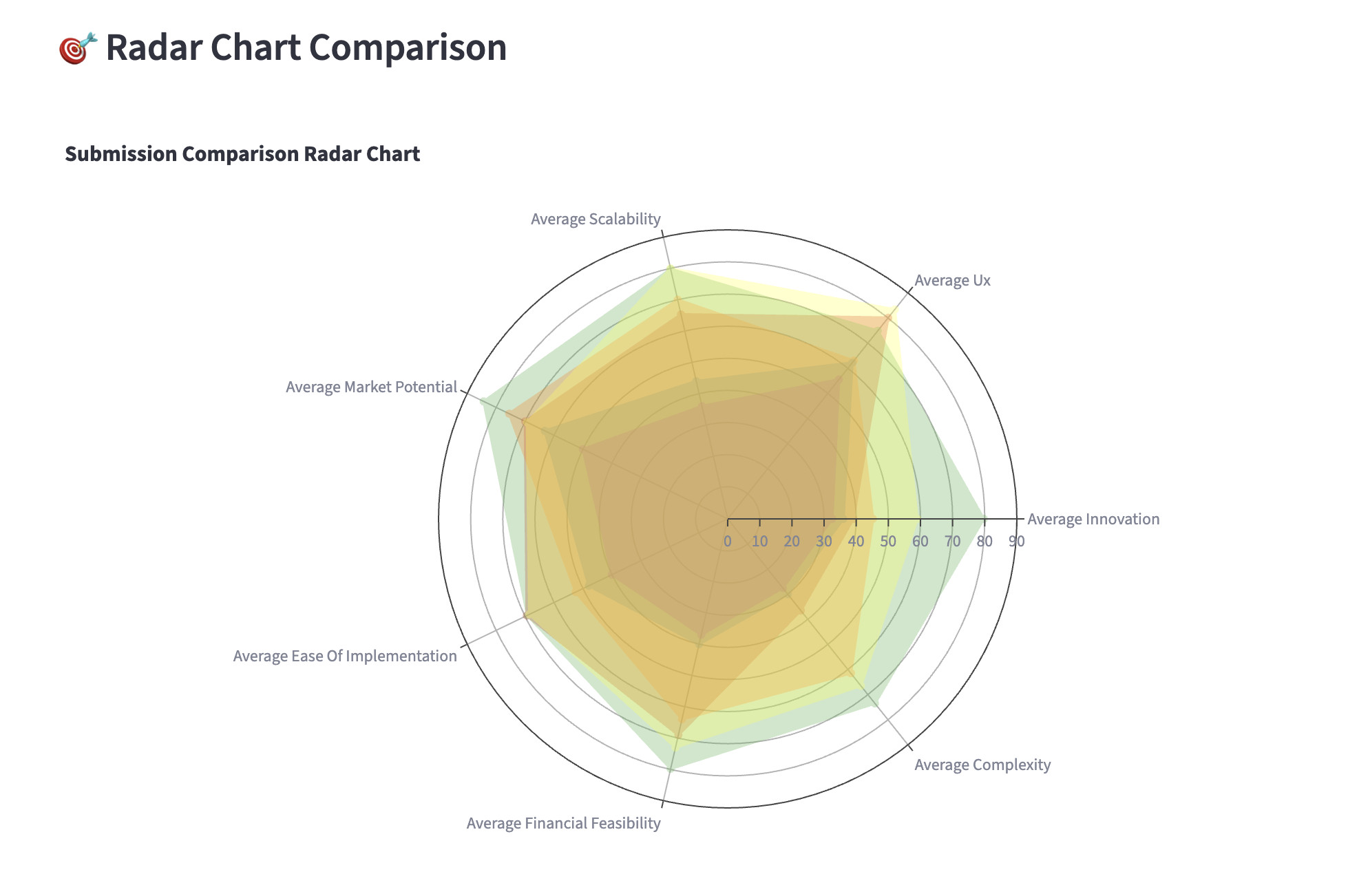November 20, 2025
Neuro SAN Update: Apache 2.0 License & MCP Integration
Neuro SAN now uses the Apache 2.0 open-source license and is progressing toward native MCP support. Learn how these updates make integration easier and more flexible.
Neuro SAN just got easier to adopt and integrate. The open-sourced framework’s core engine has transitioned to the Apache 2.0 license, replacing its previous Academic Source License. This update aligns Neuro SAN with a widely recognized open-source standard, simplifying integration, resolving dependency-scan concerns, and supporting broader community collaboration around multi-agent system development.
Expanded Observability Capabilities
Recent updates introduce broader Observability integration. Neuro SAN now produces tracing information that spans every agent in a multi-agent network, with top-level traces representing the network and mid-level spans reflecting each agent’s position within the call graph. This structured approach gives clearer visibility into how agents interact and how decisions propagate through the system.
The framework now also surfaces internal message traces, helping developers understand and debug agent communication. Configuration controls allow fine-tuning of what request metadata and cluster details are included with each trace, enabling teams to align observability data with their operational or privacy requirements.
For teams using LangSmith, Arize Phoenix, or Honey Hive, these updates provide the detailed visibility needed to debug and monitor agent networks effectively, whether in research, development, or production.
Native MCP Integration and Architectural Updates
Neuro SAN is also progressing toward native support for the Model Context Protocol (MCP). Each Neuro SAN server can now operate as an MCP server, providing fine-grained control over which agent networks are exposed through MCP. This will make Neuro SAN more interoperable with other AI frameworks that rely on standardized context exchange.
Under the hood, Neuro SAN now runs fully on LangChain v1, ensuring compatibility with the current LLM tooling ecosystem. We’re also adding middleware hooks through the HOCON data file specification, a structured, JSON-like format with support for comments and flexible configuration. These hooks will make it easier to extend and standardize multi-agent network definitions for more complex projects.
Together, these updates strengthen Neuro SAN’s foundation as an open, extensible framework for building and studying multi-agent systems. Stay tuned for upcoming releases.
Daniel Fink is an AI engineering expert with 15+ years in AI and 30+ years in software — spanning CGI, audio, consumer devices, and AI.








